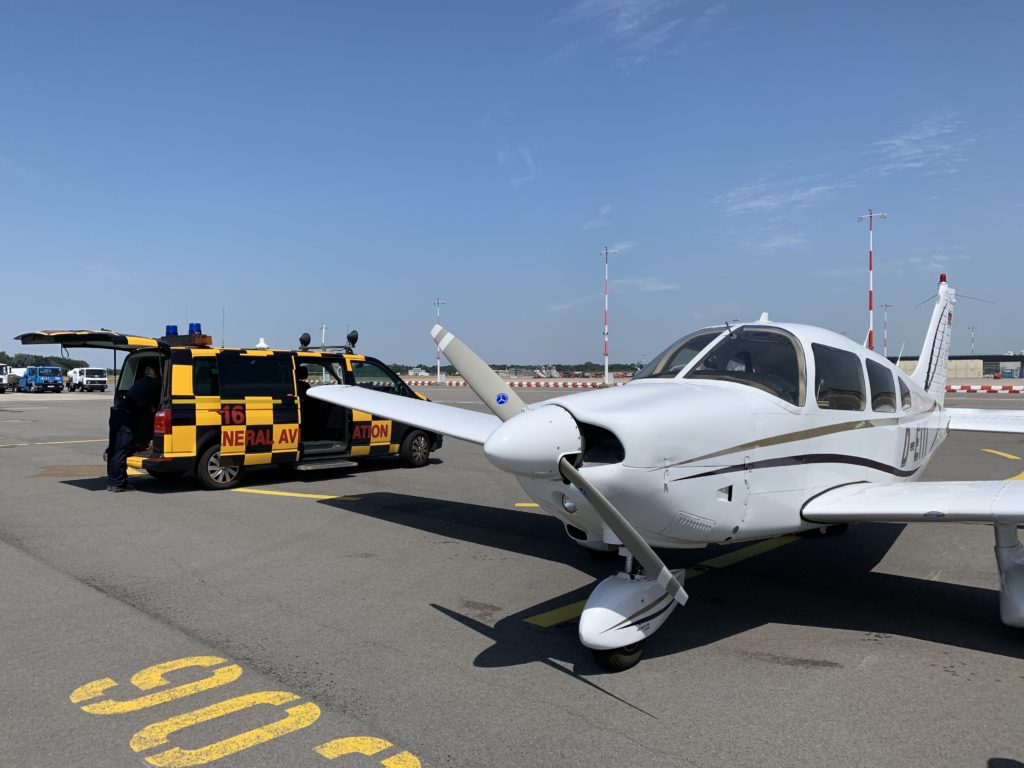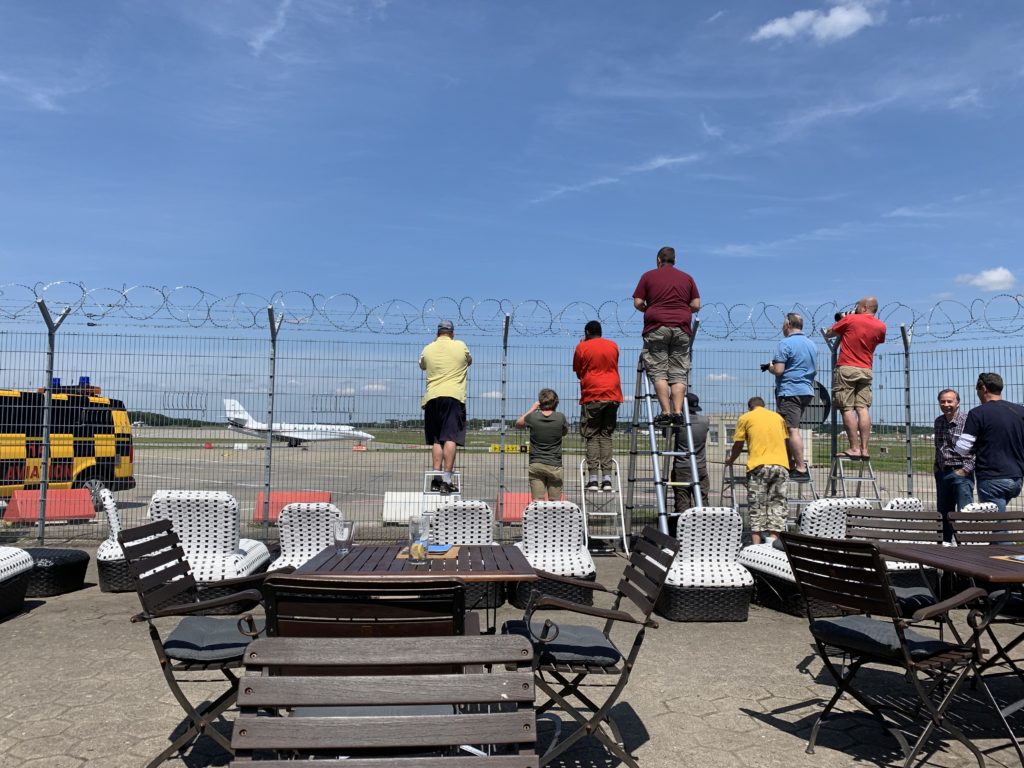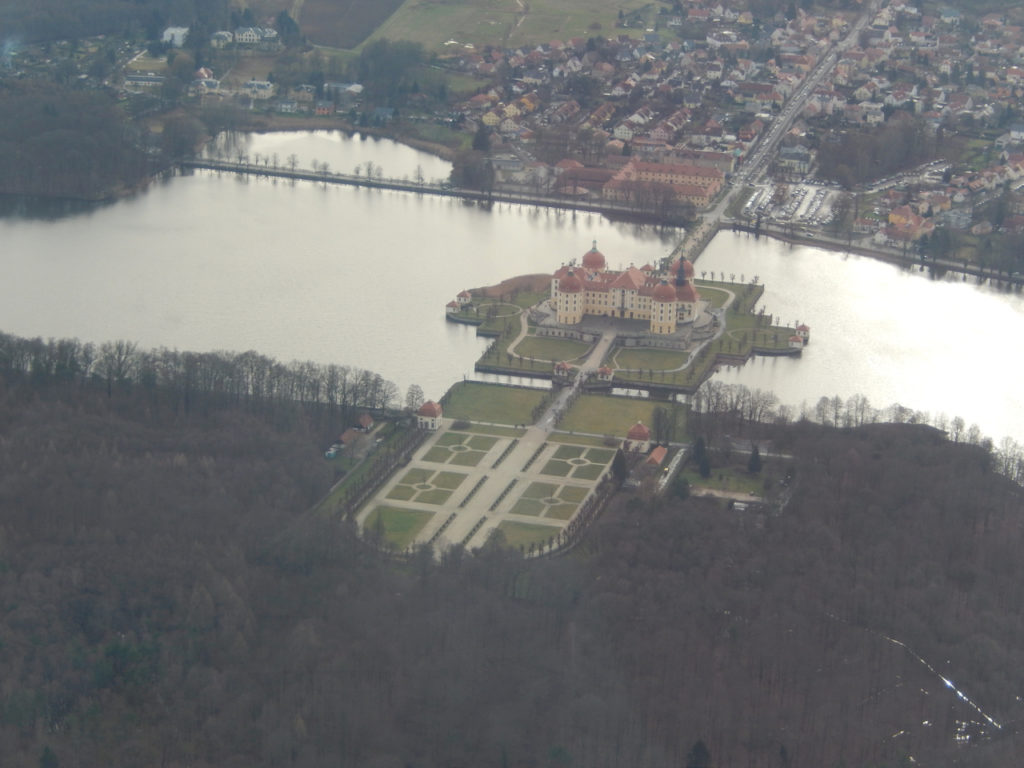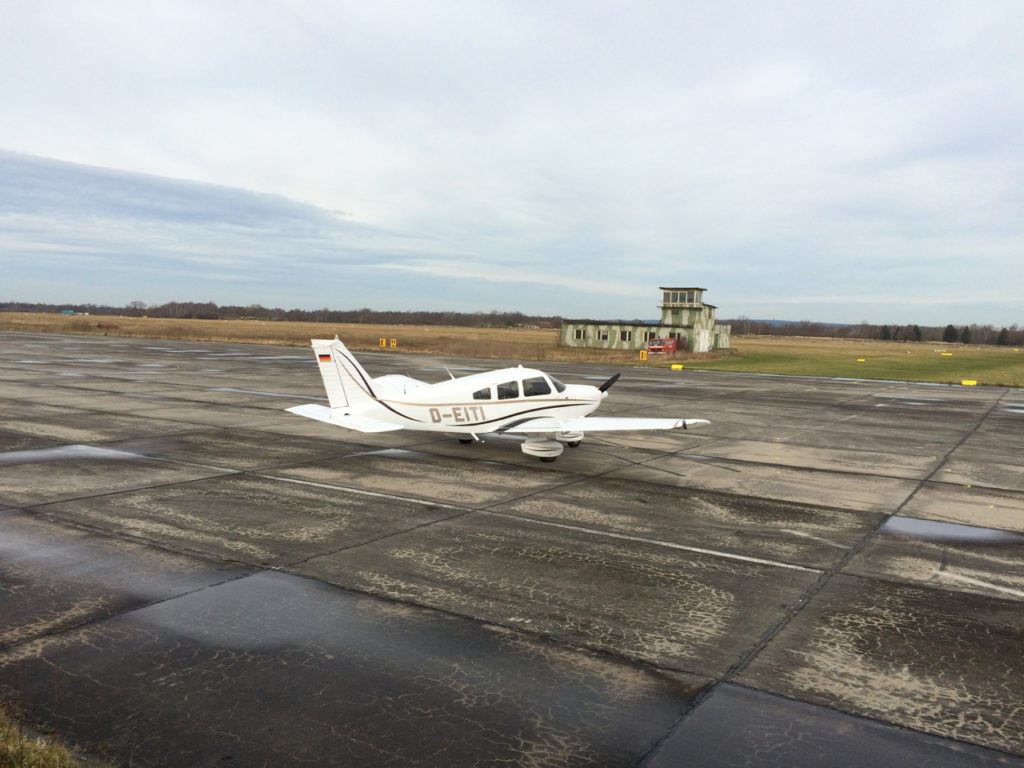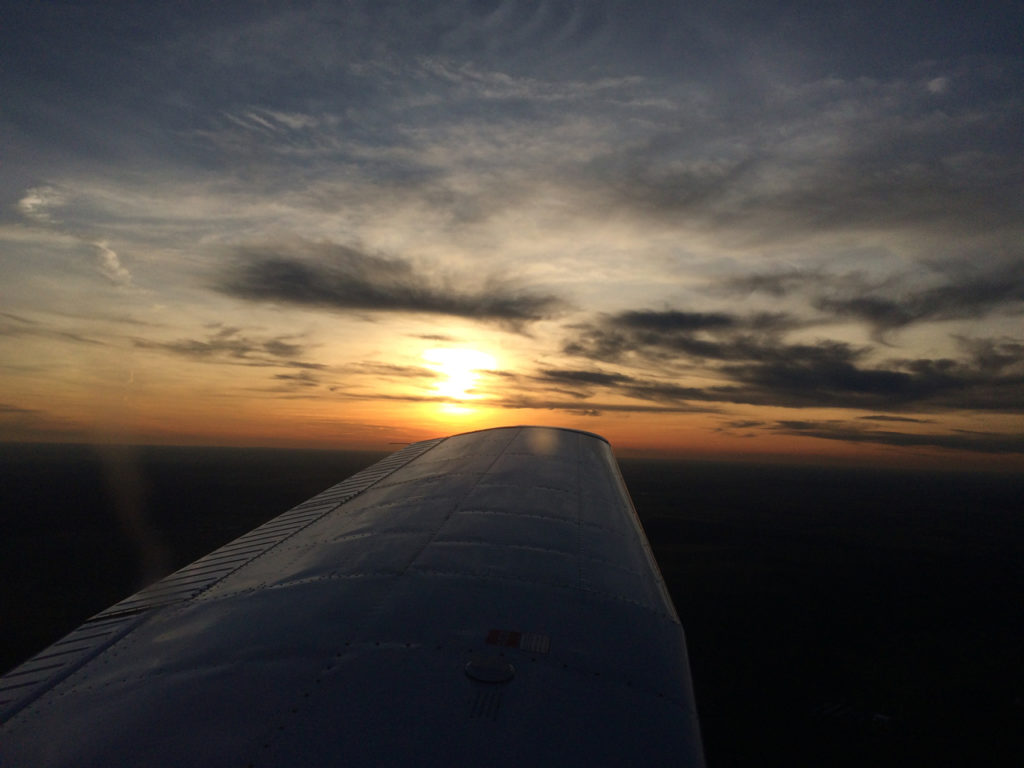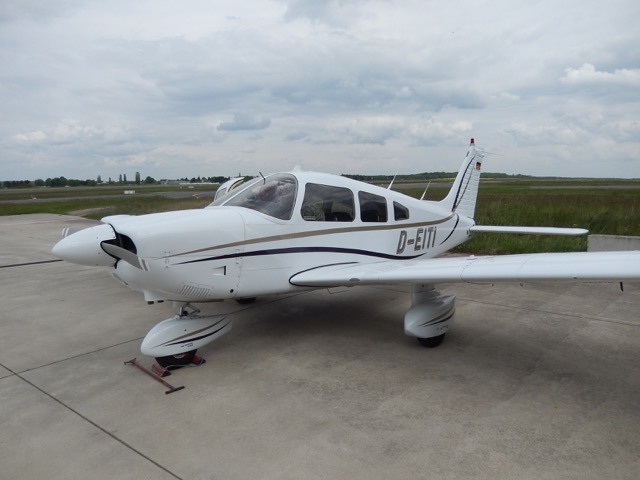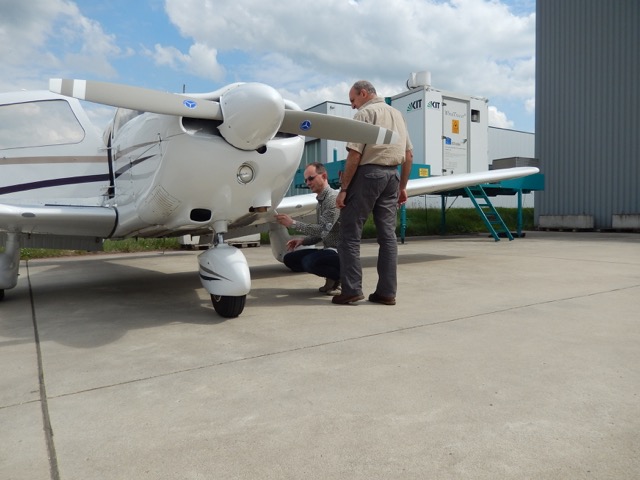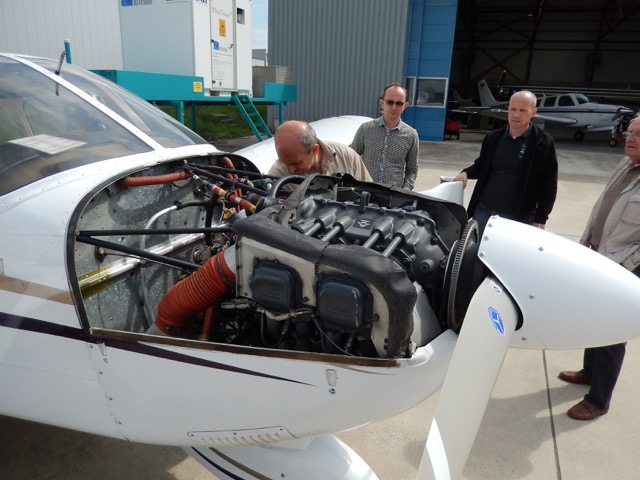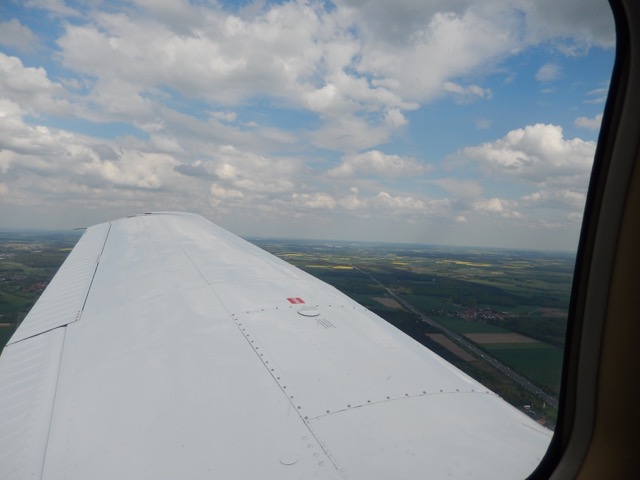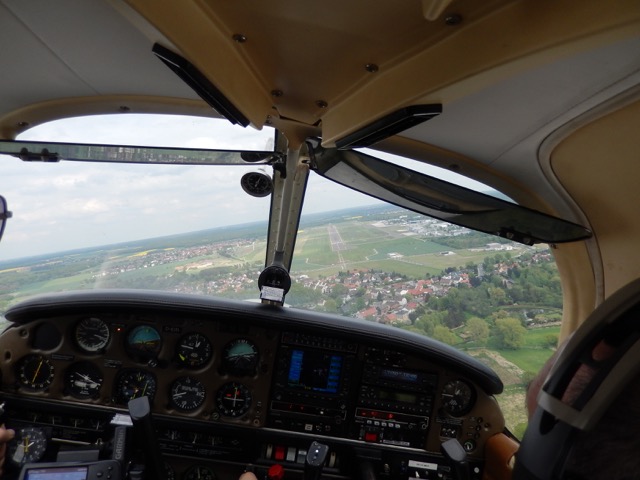Flying with the big jets
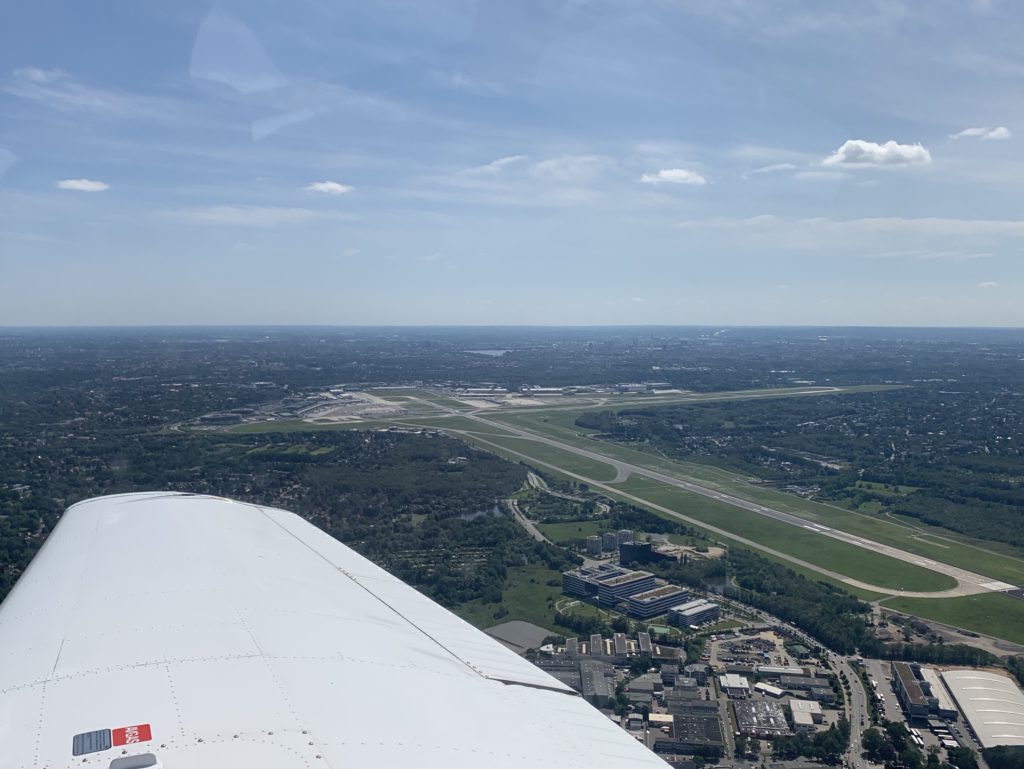
Visibility: unlimited
Temperature: 25°C
QNH: 1021hPa
Location: EDDH (Hamburg)
Equipment: Piper 28 (D-EITI)
The second city is a little over an hour away as the Piper flies. They have a big international airport in the middle of the city. Not all of them are easily accessible to small aircraft. But this one has a good reputation in the general aviation community. Friendly and relatively easy to navigate. In fact I have been there by air once, many years ago with my flight instructor. I am qualified to go there, I am comfortable with the radio and I have current charts. How hard can it be, really! (Sounds like whistling in the dark? Maybe a little bit.)
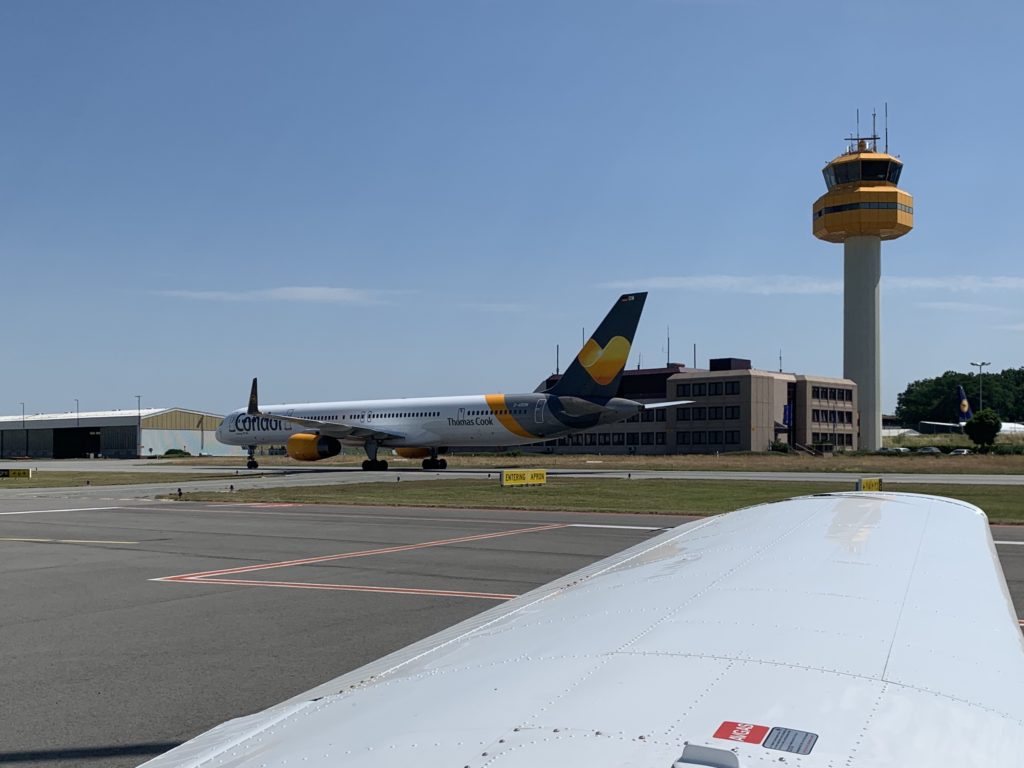
Big Jets
International airports are the playgrounds of the pros. They fly the big iron, they do it all the time, they do it fast, and they sound cool on the radio. That can be a bit intimidating for piston scum like myself. But I’m on a mission. I want to visit my buddy before he moves away and I want to get there with as little ground contact as possible!
The day is gorgeous. I look over my flight plan and the approach briefing one more time, then I’m ready to go.
The flight is beautiful. I enjoy being in the sky again after spending a lot of time on the ground lately. The rain last night has washed the dusty heat away. The sun is out, the temperature is pleasant, not a cloud in the sky. When I get close to my destination, I listen to the ATIS, the automated broadcast about the current weather, runway in use and other important information at major airports. Then I call the tower.
Controlled airspace
I fly under Visual Flight Rule (VFR) and I typically move through the uncontrolled airspace. I can go where I want and although it is possible (and a good idea) to check in with air traffic control, I’m under no obligation to do so.
The pros fly under Instrument Flight Rule (IFR). IFR traffic moves through controlled airspace, typically at higher altitudes. The big airports are the place where these two worlds meet. They have an area of controlled airspace around them in order to deal with the IFR traffic. When I want to enter, I ask the tower for permission and follow their instructions.
On a clear day like today, the approach is easy. The friendly controller vectors me to the correct end of the runway and tells me that I will be number two for landing after a CRJ regional jet. I report the traffic in sight and have enough time to watch him land before it is my turn. The runway is so big in all dimensions that I could probably land the little Piper sideways. When I taxi off of the runway, a follow-me car is already waiting for me. It guides me to my parking position, then the driver gets out and marshals me in with illuminated wands and a huge smile on his face. What a great welcome!
I feel like the king of the world and will probably come here again, soon!
To be continued…
